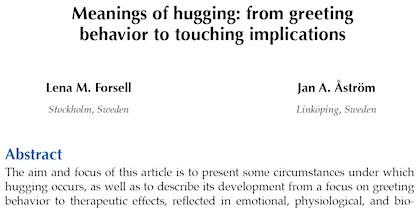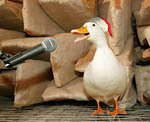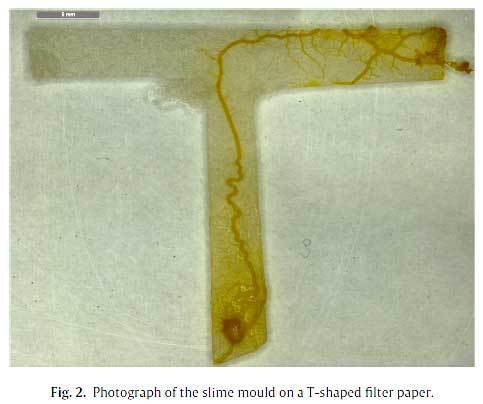Marc Abrahams's Blog, page 255
August 20, 2016
An answer to the duck-quack-doesn’t-echo conjecture
Certain persons at the University of Salford decided it was necessary to answer an old supposition:
(Thanks to investigator Dany Adams for bringing this to our attention.)

August 19, 2016
Slime moulds prefer right turns (new study)
Slime moulds (Physarum polycephalum for example) are quite dexterous when it comes to solving complex 2-D puzzles – their skills having been documented in research which led to the double Ig Nobel prizes (2008 & 2010) awarded to Toshiyuki Nakagaki [full details via here]. Now a new study performed by Alice Dimonte and Victor Erokhin (IMEM-National Research Council, Parma, Italy), Andrew Adamatzky (Unconventional Computing, UWE, Bristol, UK) and Michael Levin (Tufts University, Medford, MA, USA) have made a discovery that could, if replicated, have large scale implications for those involved in such fields. Slime moulds strongly prefer right turns.
In a series of 120 experiments in which moulds made their way up a T-shaped junction, the team found that they turned right in no less than 74% of trials. As yet, the team don’t have a firm explanation for the phenomenon, and call for further research to clarify :
“[…] the role of gravity and other geophysical parameters (such as geomagnetic field, hemisphere location, etc.) in this phenomenon remains to be explicitly tested in Physarum asymmetry.”
See: On chirality of slime mould BioSystems, 140 (2016) 23–27.
Also see: Which way do sheep turn? [JER research] Improbable Research, May 2012.
And: ‘Ants show a leftward turning bias when exploring unknown nest sites’ Biology Letters, December 2014.
Coming soon: Can Physarum successfully apply its embodied intelligence to rationalise motorway topology?

August 18, 2016
Ig Nobel winner Justin (sting pain index) Schmidt profiled in NY Times
Justin Schmidt, whose thorough love of insects led him to many good things, including an Ig Nobel Prize, is profiled in the New York Times Magazine:
The 2015 Ig Nobel Prize, in the combined category of Physiology and Entomology, was awarded jointly to two individuals: Justin Schmidt, for painstakingly creating the Schmidt Sting Pain Index, which rates the relative pain people feel when stung by various insects; and to Michael L. Smith, for carefully arranging for honey bees to sting him repeatedly on 25 different locations on his body, to learn which locations are the least painful (the skull, middle toe tip, and upper arm). and which are the most painful (the nostril, upper lip, and penis shaft).
BONUS: QI Elves do dramatic readings from the Schmidt Sting Pain Index:

‘Functional Stupidity’ – updated (new study)
Back in 2013, Improbable reported on the emergence of a new organisational concept – ‘Functional Stupidity’, see ‘A Stupidity-Based Theory of Organizations’. Now, the idea of ‘Functional Stupidity’ has been refined by Roland Paulsen, who is a researcher at the Department of Business Administration, Lund University, Sweden.
“I distinguish 10 ‘stupidity rationales’ emanating from reflective types of compliance with which employees can motivate the practice of functional stupidity.”
• Healthism
• Constructiveness
• Defeatism
• Ethical empiricism
• Agentic shift
• Work ethic
• Adaptationism
• Machismo
• Ego-essentialism
• Fun
see: Slipping into functional stupidity: The bifocality of organizational compliance in the journal Human Relations June 7, 2016.
The author also points to an enigmatic aspect of thoughts about ‘Functional Stupidity’
“Functional stupidity in itself is unreflective in the sense that one cannot think about it without being reflective, thus suspending the stupidity.”
Note: The author reminds us too that ‘Dumbness’ and ‘Functional Stupidity’ should not be confused :
“Surpassing the everyday connotations of the word ‘stupidity’, Alvesson and Spicer make it difficult to separate functional stupidity from functional intelligence. Their formal definition of stupidity lacks an ethical dimension. Not being ‘reflexive’, asking for justifications, and so forth, may be highly intelligent in certain situations. It is in ethically ambiguous situations, and particularly when the purpose of one’s job is under debate, that the unreflective instrumentality becomes stupid. This ethical aspect distinguishes ‘stupidity’ from ‘dumbness’. As Ronell (2002: 42) puts it: ‘whereas dumbness might be part of the irreparable facticity of existence, there is an ethics of stupidity, or let us say simply that it calls for an ethics’.”

August 17, 2016
Hugging — What Does It Mean? [podcast 77]
A scientifical Swedish attempt to get a mental grasp on hugging — that’s the central thing in this week’s Improbable Research podcast.
SUBSCRIBE on Play.it, iTunes, or Spotify to get a new episode every week, free.
This week, Marc Abrahams — with dramatic readings by Harvard chemist Daniel Rosenberg — tells about:
Hugging and what it means, maybe — “Meanings of hugging: From greeting behavior to touching implications,” Lena M. Forsell and Jan A. Åström, Comprehensive Psychology, Volume 1, Issue 1, 2012.

A possibly-confused British man’s video testimony about Swedish hugging:
The mysterious John Schedler or the shadowy Bruce Petschek perhaps did the sound engineering this week.
The Improbable Research podcast is all about research that makes people LAUGH, then THINK — real research, about anything and everything, from everywhere —research that may be good or bad, important or trivial, valuable or worthless. CBS distributes it, on the CBS Play.it web site, and on iTunes and Spotify).

August 16, 2016
What’s new in the Ig Nobel Prize-winning world of Spam
“Some 250,000 cans clicking along every day, six days a week.” That’s most of what’s new in the world of Spam, as detailed in a Bloomberg report by Kyle Stock, with the mildly contrary headline “Beyond Spam.”
The 1992 Ig Nobel Prize for nutrition was awarded to the utilizers of Spam, courageous consumers of canned comestibles, for 54 years of undiscriminating digestion. That time period has now, of course, stretched to 76 years.

Video problems: Grrrr! Bear with us…
We are, as they say, “experiencing” problems in displaying videos on the Improbable Research blog. The problem occurs only with certain browsers (notably Chrome, on Macintoshes). On some other browsers, on some other kinds of computer, there is no problem at all. You can see the problem, or not see it, in our blog item about “Many, many kinds of infinity“.
In case you’re curious about the technical details: The WordPress plug-in we have been using for many years is — suddenly — not working properly. Our crack technical team (who is named Julia) is relentlessly, ruthlessly, doggedly seeking out a good way to solve the problem.
Bear with us, please, as Julia does glorious battle with this glitch!

Many, many kinds of infinity
Vi Hart, in this video, explains and plays with many kinds of infinity:
BONUS QUESTION (for mathematicians): Are there infinitely many kinds of infinity?

August 15, 2016
The Glossiness of Grackles (and other birds)
“The glossy sheen of healthy hair is an ideal of human beauty; however, glossiness has never been quantified in the context of non-human animal signaling. Glossiness, the specular reflectance characteristic of polished surfaces, has the potential to act as a signal of quality because it depends upon material integrity and cleanliness.”
 For those reasons, Matthew Toomey and colleagues at the School of Life Sciences, Arizona State University have developed – ‘A novel method for quantifying the glossiness of animals’. Their paper on the subject was published in Behavioral Ecology and Sociobiology, May 2010, Volume 64, Issue 6, pp 1047-1055.
For those reasons, Matthew Toomey and colleagues at the School of Life Sciences, Arizona State University have developed – ‘A novel method for quantifying the glossiness of animals’. Their paper on the subject was published in Behavioral Ecology and Sociobiology, May 2010, Volume 64, Issue 6, pp 1047-1055.
A full version of the paper may be found here.
Note: The photo shows measurements of the relative glossiness of a great-tailed grackle.
Also see: ‘Hmmm, sooo shiny, sooo nice’ – but why?

August 14, 2016
Up in the air, junior bird man: from Ireland to Africa, lawnmower-ly
With a spirit somewhat akin to that of Ig Nobel Prize winner Troy (built a suit of armor to protect against grizzly bears) Hurtubise, comes “One man’s dream project to fly from Ireland to Africa by lawnmower gets under way this week“. The story is reported, with that headline, in The Journal:
A FEW MONTHS back, we brought you the story of 52-year-old Oisín Creagh – the Dublin-born, Cork-based architect with a slightly-odd project on the go.
Yes, Oisín is a paramotorist – a form of aviation basically involving the equivalent of a lawnmower engine and a parachute and precious little else. He’s planning to fly one of these things to north Africa, a trip-distance of 3,000 kilometres, to raise money for Gorta-Self Help Africa and its operations in drought-ravaged Ethiopia.
And it all kicks off this week.
Oisín is set to fly his ‘wing’ (as a paramotor is known within the sport) across the English channel before turning south and heading across the Straits of Gibraltar to Africa.
The entire trip should take him a month, flying at an average of 1,500 feet, in three-hour, 150 km bursts.
BONUS: A performance of the beloved song “Up in the Air, Junior Birdmen!“:

Marc Abrahams's Blog
- Marc Abrahams's profile
- 14 followers










